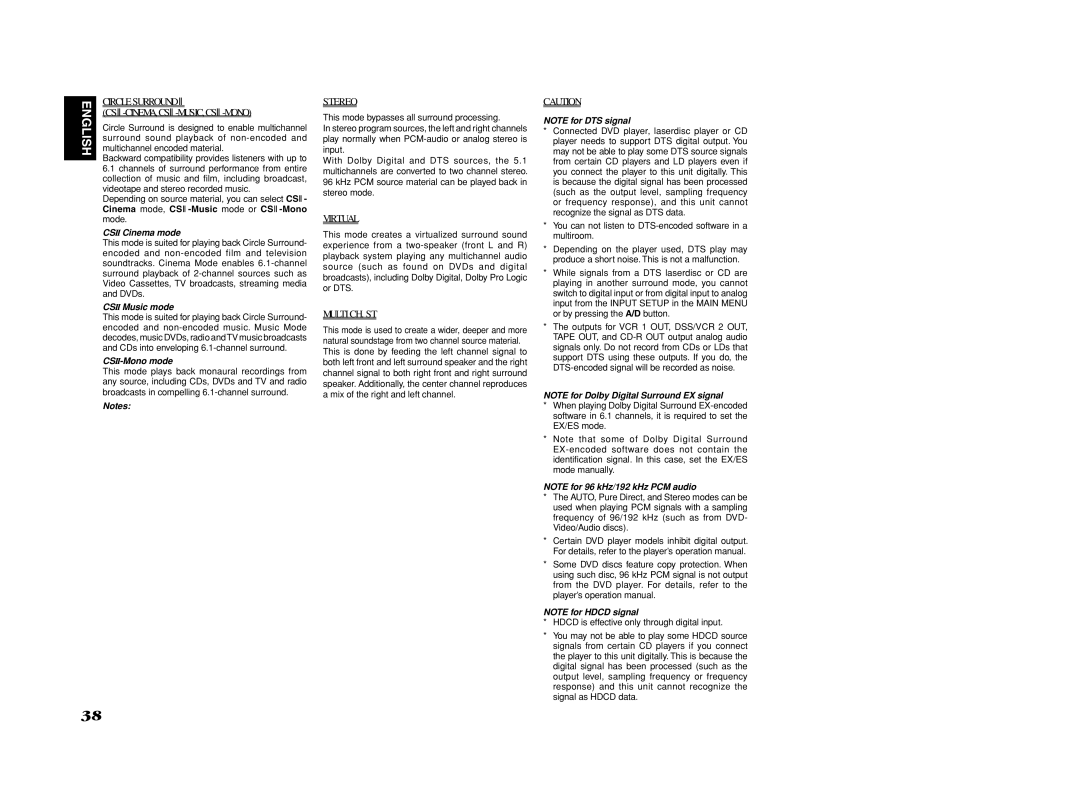SR4002/SR5002 specifications
The Marantz SR4002 and SR5002 are two remarkable home theater receivers that deliver exceptional audio performance, making them stand out in the crowded market of AV receivers. Both models are designed for audiophiles and home theater enthusiasts who demand superior sound quality, versatility, and advanced features.The SR4002, known for its robust build and high-quality components, provides 100 watts of power per channel, ensuring dynamic sound reproduction for a variety of media. This model supports a wide range of audio formats, including Dolby Digital, DTS, and PCM, enabling an immersive surround sound experience. It features multiple inputs and outputs, including HDMI, allowing seamless connectivity to a multitude of devices such as Blu-ray players, gaming consoles, and streaming devices. The SR4002 also includes a built-in AM/FM tuner, giving users the flexibility to enjoy their favorite radio stations.
On the other hand, the SR5002 takes it a step further with its enhanced specifications and features. With 110 watts of power per channel, it caters to larger home theaters without sacrificing sound quality. One of the standout features of the SR5002 is its advanced audio processing technology, which ensures precise sound staging and clarity in complex audio environments. The addition of Audyssey MultEQ room calibration technology helps automatically adjust the receiver's settings based on the acoustic characteristics of the room, optimizing audio performance for an unparalleled experience.
Both models boast a sleek design that fits seamlessly into any home entertainment setup. They feature an intuitive on-screen display that simplifies navigation through menus and settings. The user-friendly remote control provides easy access to all functionalities, making it simple to switch between inputs or adjust audio settings.
In terms of connectivity, both the SR4002 and SR5002 are equipped with multiple HDMI inputs, including support for 1080p video, ensuring compatibility with the latest high-definition content. They also feature legacy connections, such as composite and component video inputs, making them suitable for older equipment.
Overall, the Marantz SR4002 and SR5002 are solid choices for anyone looking to elevate their home entertainment experience. With their combination of robust power, advanced processing technologies, and versatile connectivity options, these receivers deliver rich, immersive sound that brings movies, music, and games to life. Whether you choose the SR4002 for its excellent features or the SR5002 for its enhanced capabilities, both models promise to transform your audio experience.

